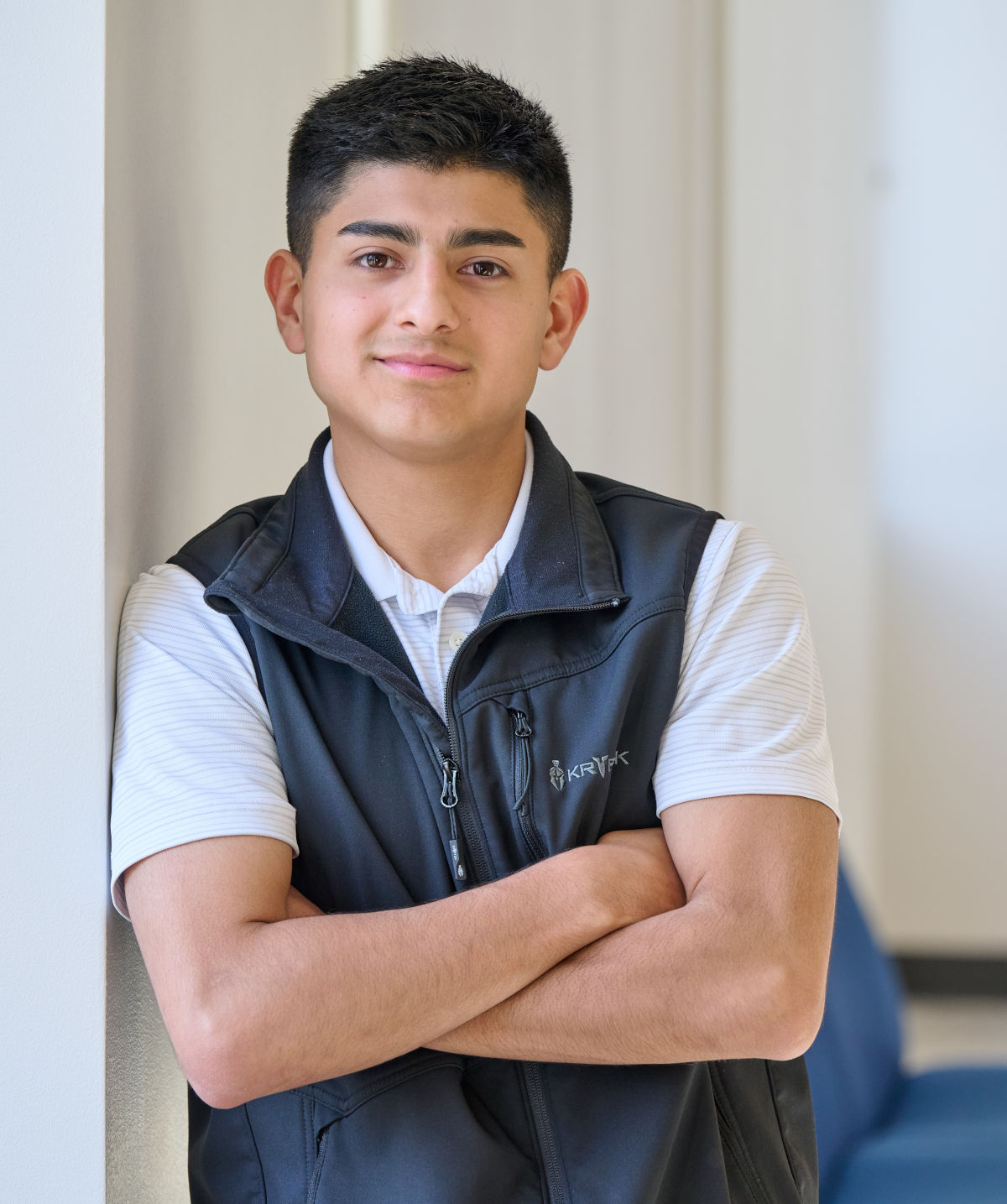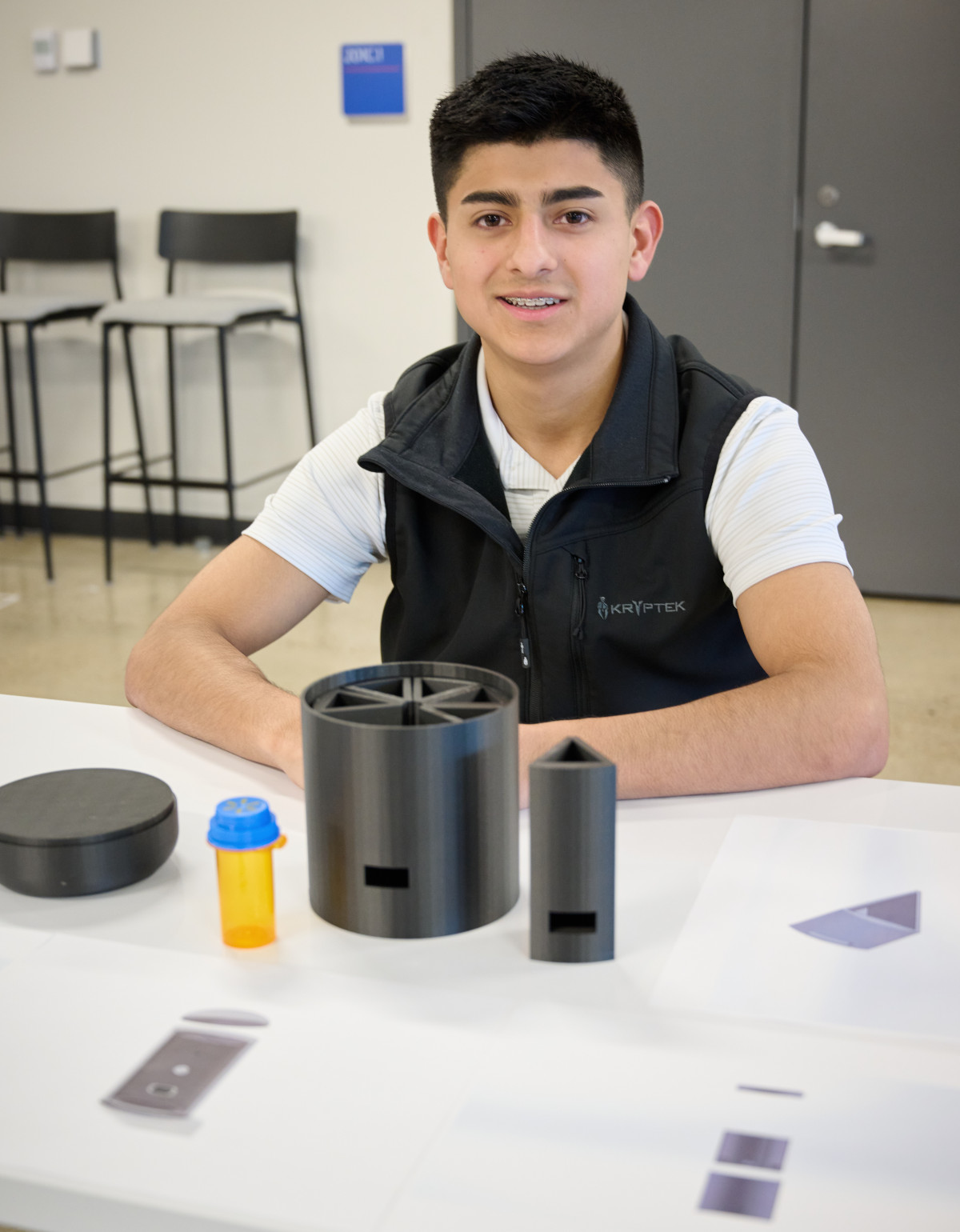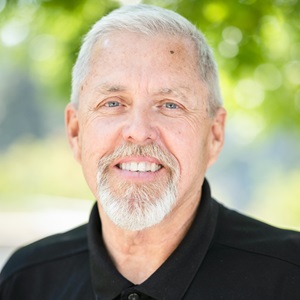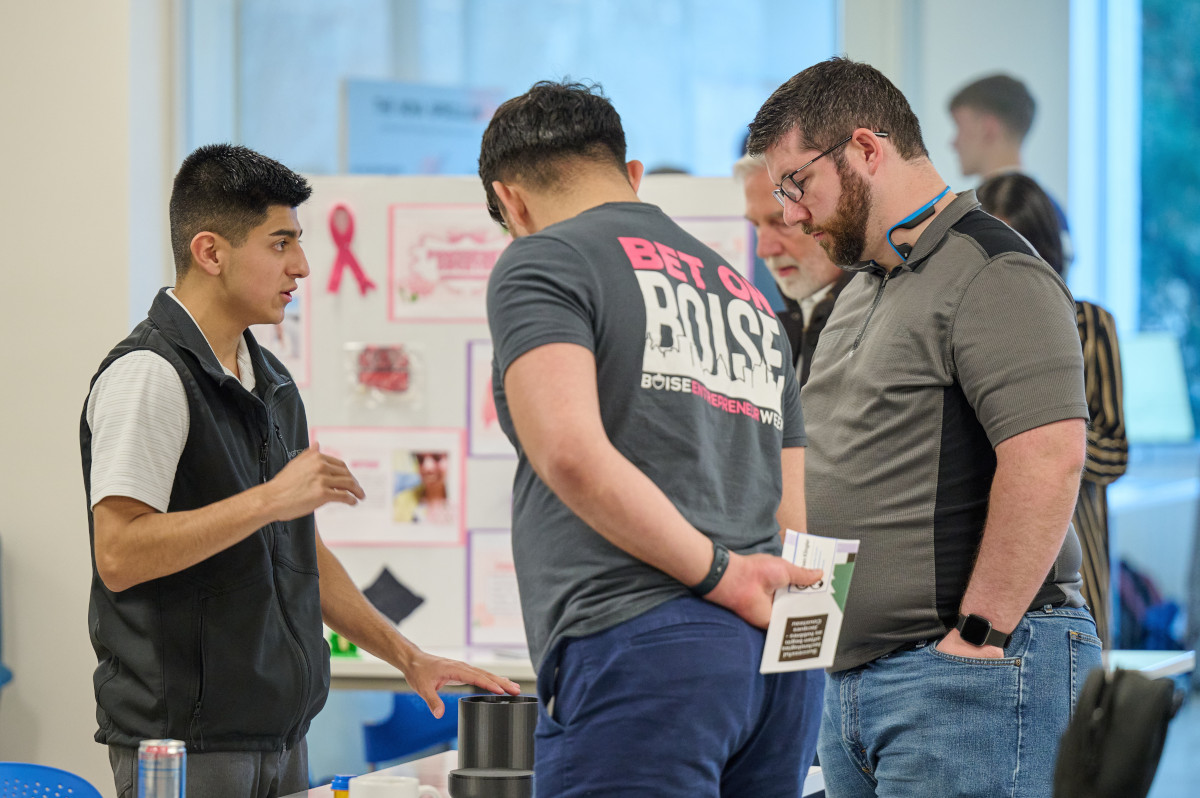CBE classmates are finalizing an invention to automate dispensing prescription medication
AI technology dispenses the correct medication at the right time of day, lessening the chance of patient error
As a 10-year-old, Ismael Valadez found himself keeping track of his mother’s medications, making sure she was taking the right one at the right time. Battling cancer and being unable to open the bottles herself because of weakness from radiation treatments, she needed full-time help. Valadez thought there had to be a better way for people to manage medications.
As a college student watching his girlfriend miss a dosage of her medication because she accidentally turned off her reminder phone alarm, Austen Reagan agreed.
Two of my older siblings were at U of I when she was first diagnosed, so here I was at 10 years old basically becoming a nurse, making sure she got everything she needed to get better. Not everyone who needs that level of help has access to around-the-clock care. This could help save lives. Ismael Valadez, CBE junior
Together, the Alpha Kappa Lambda fraternity brothers are attempting to revolutionize the medical industry.
The College of Business and Economics (CBE) students have developed an automatic medication dispenser which controls when and how often medications are given. The device also has the capability of connecting to MyChart, an online medical chart that displays all prescribed medications.
“This is a real problem that a lot of people have,” said Reagan, a sophomore from Boise. “It’s something Ismael and I have both helped with. And I think it’s a problem we can help solve.”

Explaining the why
After becoming friends, Valadez, originally from Nampa, convinced Reagan to join him in an entrepreneurship class, Startup Innovation and Ideation. A finance major, Reagan agreed, primarily because he was intrigued with the idea of creating a startup business.
Their brainchild started with a brainstorming session. Reagan, while thinking about helping his girlfriend keep track of her medications, came up with the idea and pitched it to Valadez — unaware of his friend’s similar experiences helping his mother.
The pair then began thinking about how to make the product and, more importantly, how to pitch it.
“When we talk about a product’s place in the market, I ask the students what they see out there that isn’t working and how can it be fixed,” said Lori Rock, marketing and communications manager for CBE and instructor for the class. “Then we talk about creating a connection with customers by sharing a human element to the story – why their project is important to them.”
Somewhat hesitant to share the story about his mother at first, Valadez realized it could be an important part of developing a pitch.
“Talking about the situation with my mom wasn’t natural because we kept it mostly in the family,” said Valadez, a junior majoring in criminology and minoring in entrepreneurship. “I told close friends but didn’t really talk openly about it. But it makes sense to talk about it with your product because it gives you credibility – you aren’t just trying to invent something to sell it, you really are trying to help people.”
After roughing out several initial drawings of what they envisioned, Valadez and Reagan recruited help from a fraternity brother to produce a digital drawing. Once they had a design, they found Ben Miller, senior in biological engineering, who 3D printed a model for them as part of his prototyping class.

Building it out
Once they had the product, Valadez and Reagan needed to figure out how to sell it.
“Startup Innovation and Ideation is where students build out an idea,” said George Tanner, CBE senior instructor of entrepreneurship. “Entrepreneurship is where we put a business model together to see if the idea makes sense.”
Valadez and Reagan created feasibility analyses, business plans, proposals for funding and other studies to show there was an opportunity to create and sell their product.
The device, called Medi-Mate, uses AI and facial recognition to dispense up to a month’s worth of eight medications at the correct time of day, eliminating potential human error of skipping or accidentally doubling up a dose.
Valadez and Reagan are partnering with St. Luke’s Medical Center in Boise and MyChart to begin trials in the near future. St. Luke’s can live chat with patients about prescription refills, which will then be ordered and displayed in real time by MyChart.
“It saves doctors and patients an office visit and doctors will feel like they are getting accurate information,” Valadez said. “It not only makes things easier for the patient, but it also saves time for the doctor, which addresses burnout in the medical profession.”
George Tanner
Idaho Entrepreneurs Director and Senior Instructor of Entrepreneurship
Valadez also participated in several product showcases over the past six months, including the Idaho Entrepreneur Challenge in Boise this spring. In addition to receiving valuable feedback from the Boise show, Valadez connected with Trailhead, a non-profit organization in Boise that matches entrepreneurs with potential investors.
Valadez and Reagan have an agreement in place with a North Idaho engineering company to build the devices once financing is secured.
According to Tanner, information gleaned from showcases is as important to entrepreneurs as what they learn in class.
“Sometimes we think we’ve covered all our bases, but the reality is that market information tells us what we need to know,” he said.
Valadez, who recently moved to Nampa and is interning with the Nampa Police Department while he finishes his U of I degree online, is excited to see the idea turn into reality.
“Two of my older siblings were at U of I when mom was first diagnosed, so here I was at 10 years old basically becoming a nurse, making sure she got everything she needed to get better,” he said. “Not everyone who needs that level of help has access to around-the-clock care. This could help save lives.”

Article by David Jackson, University Communications and Marketing.
Photos by Mark VanderSys, Pixel Light Creative Group.
Published in May 2025.










